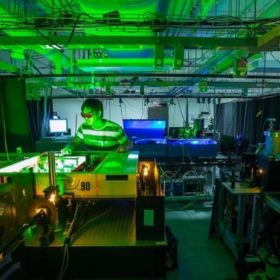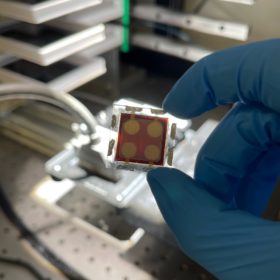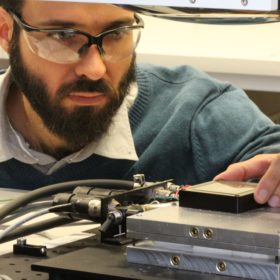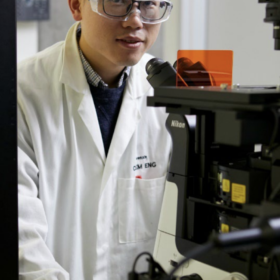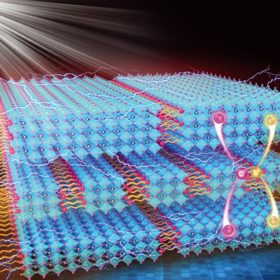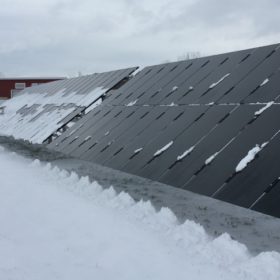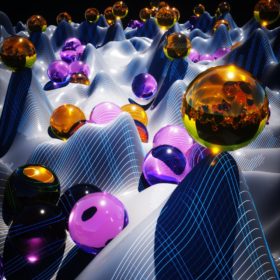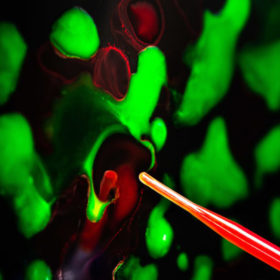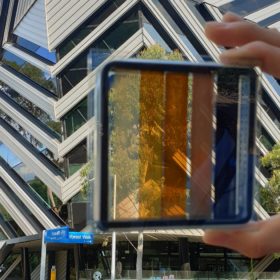UNSW team make discovery they say could push solar’s efficiency limit beyond 40%
UNSW researchers have found a new approach to photochemical upconversion, which involves converting low light particles into higher-energy light particles. The discovery has potential to unlock innovations in renewable energy, particularly solar, with the team flagging it could raise the efficiency limit of solar devices from 33.7% to 40% or beyond.
Australian researchers reveal new pathways for perovskite cells
Controlling the crystallisation process of perovskite thin films is one of the most challenging aspects for upscaling the solar technology but a team of Australian researchers claims to have made a breakthrough, creating next-generation PV cells that have the potential to rival the durability of silicon alternatives.
Australian researchers reveal improvements for solar window technology
A team of Australian scientists has declared the prospect of buildings, particularly those with glass facades, becoming close to self-powering is a step closer to realisation after developing a 15.5% efficient semi-transparent solar cell which allows more than 20% of visible light through.
Water ‘secret ingredient’ in new processing mechanism for perovskite nanocrystals
An unlikely union has been discovered by members of ARC Centre of Excellence in Exciton Science, who have found a way to control the growth of phase-pure perovskite crystals for next-generation photovoltaics using water.
Nanoparticles enable completely clear, industry-sized solar windows (yes, they’re finally here and targeting 5% efficiency)
The promise of solar windows have captivated scientists and engineers for decades. Now, West Australian company ClearVue says it not only has a fully transparent, scalable, industry-ready solar window in production, but it’s just 18 months away from cracking 5% efficiency, thanks to a research partnership.
Discovered: Sandwich structure of quasi-2D perovskite film nourishes next-gen solar development
Even as solar researchers strive to squeeze every drop of efficiency from the industry-ruling silicon solar-cell technology, scientists are constantly questing for the next, cheaper, more efficient way of harvesting the sun’s energy to power human endeavours. The appetite for accelerating 2D perovskite solar cell development has just been piqued!
Going fission! How scientific enquiry by UNSW may push solar cell efficiency to 38.2%
Cross-pollination of scientific and engineering thought within the ARC Centre of Excellence for Exciton Science has led to promising findings on the the cool solar-cell efficiency-boosting mechanism known as singlet fission.
Let there be light! And the research to harness it
Some of Australia’s most thrilling thinkers are scientifically investigating the applications of light and developing new light-absorbing materials. Like human investment in space travel the dedication to solar research is paying back beyond its remit. pv magazine talks to one far-reaching centre of excellence in the field.
Australian research improves the scope and efficiency of PV light sensitisers
Australian scientists have developed an algorithm to increase both the efficiency and compatibility of light sensitisers in solar panels, encompassing silicon cells for the first time.
Australian researchers take solar windows to the next level
Solar windows have taken a big leap forward on the back of a new partnership between Australian scientists and a major glass manufacturer which will investigate the use of semi-transparent solar cells in commercial applications, potentially revolutionizing building design.
